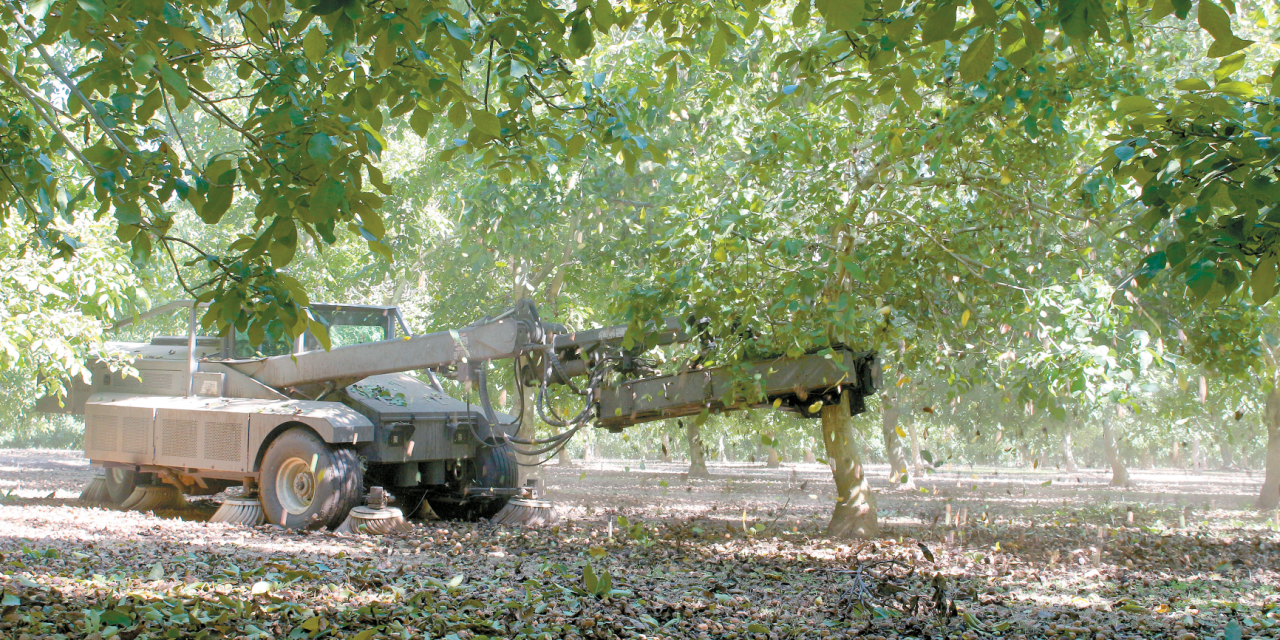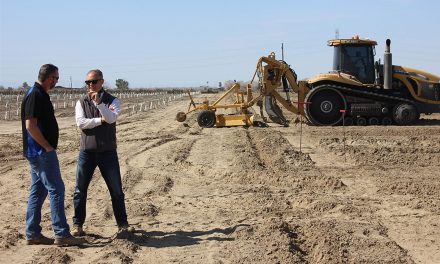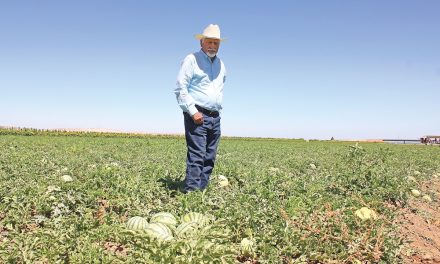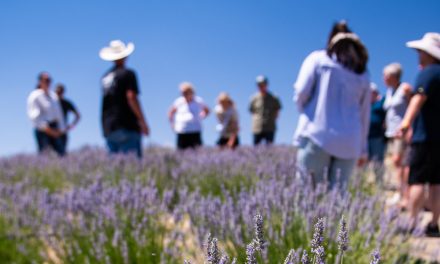Removal of India’s 20 percent retaliatory tariff expected to improve access to export market for California walnuts
By Ching Lee
California Farm Bureau Federation
CALIFORNIA — After a late-season heat wave pummeled their 2022 crop, California walnut growers are much more upbeat about their harvest this year.
Favorable growing conditions and increased rainfall have allowed them to produce higher yields and quality nuts that marketers say will be easier to sell. A top concern now is whether buyers who may have gotten used to discounted walnuts are willing to pay more for this year’s crop.
“All walnut farmers, more than anything, are focused on the market and market prices, hoping that we’re going to see drastic improvement from last year,” Tehama County grower Tyler Christensen said.
Don Barton, a walnut grower, processor and marketer in San Joaquin County, said pricing at the start of the current marketing year is already 40 percent higher than where it ended last year. If this price trend holds, he said, “maybe we even stand a chance of having some slow price appreciation through the course of the marketing season,” which typically runs through mid-to late March, when Chile’s crop comes on the scene.
“We have some cautious optimism,” Barton said.
Several factors are working in California growers’ favor, including less carryover inventory, a large portion of which has already been sold to the federal government for food nutrition assistance programs.
Removal of India’s 20 percent retaliatory tariff should improve access to an important export market for California walnuts.
Shipping logistics, which had been hampered by port slowdowns during the past two years, are “much more normal” these days, Barton said. This should allow shippers to get product to markets during key demand periods such as Christmas in Europe, Diwali in India and Ramadan in the Middle East.
On the farm, growers agree that ample rain and relatively mild summer temperatures this year helped their crop, producing nut kernels that are fully filled, meaty, and light in color.
“We will have buyers that will be encouraged, especially when they see the first loads that get shipped overseas,” Barton said. “We think that when they do see those, they’ll be eager to get more. That will really help us from a marketing perspective.”
With harvest of the Chandler variety — which accounts for two-thirds of the state walnut crop — underway and on time after a later start of earlier varieties, Barton said the harvest season will be compressed. Growers say a spotty rain event in late September made some fields muddy, delaying harvest for a couple days, but the moisture also sped overall crop ripening.
That means many trees are ready to harvest at once, putting more pressure on hullers, said Bill Carriere, a grower and processor in Glenn County. Growers will save some money because they will likely shake trees one time, he said, but “it’s going to be hectic at the hullers.”
Barton said shippers need to get product on the water by mid-October to hit European markets by early December in time for the Christmas shopping season. The risk of late-harvest downpours puts pressure on growers, as heavy rains prevent equipment from getting in the field. Nuts sitting on wet ground also promotes mold and affects the color of the kernels.
Though growers are excited about their higher yields, Barton said the bigger crop also means more supply, which creates more pressure on pricing.
California growers are expected to harvest 760,000 tons of walnuts this year, up 1 percent from 752,000 tons in 2022, according to a revised forecast last week by the U.S. Department of Agriculture. If realized, it will be the second-largest crop in state history.
The increased production comes even though bearing acreage has dropped 6 percent — from 400,000 in 2022 to 375,000 this year. After years of growth, this marks the first time state bearing acreage dipped. Some growers say they believe acreage is even lower than the current estimate, as more orchards were removed or have been abandoned after USDA did the survey.
Yolo County grower Stan Lester has been working all summer taking out most of his walnut trees. At 77, he said he and his family decided it was not worth “keeping the doors open” after the “disaster” of last year’s crop and “all the regulations coming down the pipeline.”
Another contributing factor was the costs he had incurred replanting a walnut orchard that later suffered nematode problems.
“It takes at least 11, 12 years to recoup (the investment),” Lester said. “In the meantime, you’ve got all this money spent, and then interest rates are going up. How do you cash flow the thing in between?”
Lester still has 65 acres of walnuts left and said he plans to grow row crops on the ground he just cleared. Annual crops such as tomatoes, he said, are “the only thing that’s making any money” right now.
Carriere acknowledged marketers were selling below the cost of production last year. This year, “we’re trying to hold out” and sell at a “reasonable price,” or about $2.50 a pound for light halves and pieces. That translates to about 66 cents a pound to the grower, which would be break-even for some of them. With inflation and higher production costs, Carriere said most growers need about 85 cents to make a profit and 75 cents to break even.
“We’re trying to educate the buyers on this, like, if you want us to provide you walnuts in the long term, you’ve got to keep us alive,” he said. “Banks are already knocking on people’s doors, and people are trying to sell orchards, and there’s no market out there for anybody to buy an orchard.”
As part of the Walnut Bargaining Association, Sutter County grower Donald Norene said the group has urged growers not to accept a price lower than 60 cents a pound for good-quality Chandler walnuts, even though 60 cents — or $2.20 a pound for buyers — remains “a pretty marginal price” and not profitable for many growers. About 80 cents a pound “would be very helpful,” he added.
Buyers remain “very patient,” Carriere said, noting there have been very few transactions to date. Because of the pushback marketers face from buyers, he said a few are “caving in” by selling at $2.10 a pound because “they’ve got to get something on the books and cash flow.”
Sutter County grower Brian Fedora acknowledged 2022 was “a very, very bad marketing year,” with growers overproducing and some of the crop ending up as cattle feed or destroyed. With much of the old crop gone and a better quality new crop, “price is supposed to be up,” he said.
“It’s up to those marketers to go out and market it, but also market it in a manner that pays the grower,” Fedora said. Considering some retailers continue to sell walnuts for $11 to $12 a pound and growers were paid 26 cents a pound last year, “that’s too much of a disparity,” he said. With the higher cost of labor, fertilizer, fuel, insurance and other inputs, Fedora said “they’ve got to pay growers more or there’s not going to be any growers.”
Carriere said he anticipates more “significant” tree removals this year. Even though most older varieties that do not have much value have already been taken out, he said marginal orchards, even those planted to Chandlers, should be removed.
“It’s going to take another painful year, unfortunately,” Carriere said. “But I think we’re positioning ourselves for long-term success.”
Feature Image: A tree shaker harvests walnuts in a San Joaquin County orchard. Thanks to milder summer temperatures and more rain this year, California walnut farmers agree their crop is much improved over the 2022 harvest. Their eyes remain on market prices and how much buyers are willing to pay. Photo by Ching Lee














